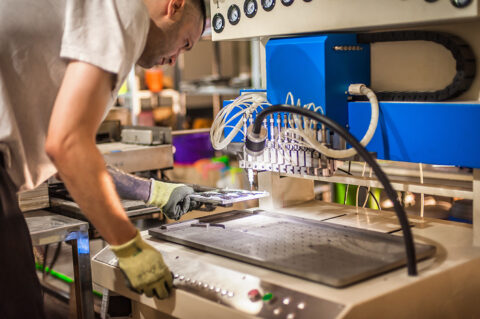In a recent episode of the Advanced Manufacturing Now podcast, de Vet reflected on the evolution of the additive manufacturing (AM) industry and shared her outlook for the years ahead. While acknowledging the tremendous progress made, she was candid about the challenges that remain.
“Yes, there has been a lot of progress, but at the same time, I think we need to be honest to admit that we might not be where we thought we would be when starting out on this journey as an industry,” de Vet noted.
She broke down the history of AM into distinct phases: the first decade focused on figuring out the fundamental technology, the second on finding meaningful applications, and the third on developing valuable business models. Now, de Vet argues, the industry is in a critical fourth phase: making additive manufacturing work a profitable endeavor.
“I would argue that the phase that we are now in is where we probably spent hopefully not a full decade, but at least some time, which is the phase where we are trying to figure out how as an industry we can make this work.”
So what will it take to accelerate the adoption of AM and scale its impact across industries? De Vet pointed to three key challenges cited by manufacturing companies: the complexity of the AM process, the cost per part, and the skills gap in the workforce.
Materialise and its peers are working to address these pain points by simplifying workflows, creating integrated ecosystems, driving efficiencies, and embedding knowledge in software. But de Vet stressed that no one company can tackle these issues alone.
That’s where initiatives like the Leading Minds Coalition come in. Launched just five months ago, the coalition brings together key players in the AM industry to pool resources, align on standards, and collectively move the needle on adoption.
The purpose of that Leading Minds Coalition [is] to accelerate the collaboration that we need in this industry. And with that, bring better solutions to our customers around the world.
As for the balance between innovation and real-world impact, de Vet was unequivocal: it’s time to double down on applying the robust technologies that already exist, rather than chasing the next shiny object.
She pointed to healthcare as a sector where AM is already making a tremendous difference, from patient-specific implants that restore mobility to surgical guides that improve outcomes. But even there, de Vet argued, “we’re still scratching the surface” of what’s possible.
Other industries like aerospace and defense are poised to follow suit, with tooling and industrial applications representing major near-term opportunities. The common thread across all these domains is the potential for additive manufacturing to drive real, tangible improvements in cost, performance, and quality of life.
That potential is what keeps de Vet excited for the future, even as she grapples with the challenges of the present. And while she was honored to receive Women in 3D Printing’s 3D Printing Innovator Award last year, she was quick to credit the Materialise team and stress the importance of cultivating a new generation of leaders – of all genders – who embody a collaborative, win-win mindset.
With evangelists like de Vet at the helm, it’s only a matter of time before the additive manufacturing industry delivers on its promise at scale. The revolution may be slow, but it is surely underway.
To learn more about Materialise and the latest developments in AM, visit materialise.com or catch up with the team at an upcoming trade show. The future of manufacturing is taking shape – one 3D-printed application at a time.




